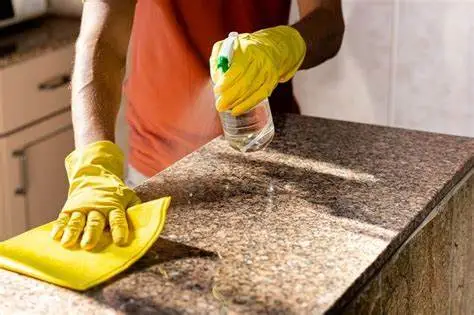
Marble slab surfaces are a hallmark of luxury and timeless design. However, due to their natural composition, marble is also relatively soft
Marble slab surfaces are a hallmark of luxury and timeless design. However, due to their natural composition, marble is also relatively soft and prone to scratching—especially polished marble slabs in high-traffic areas like kitchens and bathrooms. Whether the damage is superficial or more prominent, the good news is that most marble scratches can be repaired without replacing the entire slab.
This step-by-step guide will show you how to safely remove scratches from a marble slab, along with maintenance tips to preserve its beauty for years to come.

Why Marble Slabs Scratch Easily
Although marble slab durability is high in terms of heat resistance and structure, it ranks relatively low on the Mohs hardness scale. That makes it vulnerable to abrasion from metal utensils, sand particles, and even certain cleaning tools.
Scratches are especially noticeable on:
- Polished marble slab surfaces due to their glossy reflection
- White marble slab varieties like Carrara or Calacatta
- Bathroom countertops and vanities
- Marble slab for kitchen uses with frequent contact
For a foundational understanding, start here: What Is a Marble Slab?

What You’ll Need
For Light Surface Scratches:
- Marble polishing powder (tin oxide or oxalic acid)
- Soft cloth or microfiber towel
- Spray bottle with water
- Marble-safe cleaner
For Deeper Scratches:
- 600 to 1200 grit wet/dry sandpaper
- Marble polishing pads (optional: orbital buffer)
- Stone polishing compound
- Sealant (for reapplication)
Optional Tools:
- Variable-speed grinder or buffer
- Masking tape (to protect non-scratched areas)
- pH-neutral stone cleaner
Step-by-Step: How to Remove Scratches from a Marble Slab
Step 1: Clean the Surface
Before attempting any scratch removal, clean the marble slab thoroughly:
- Use a marble-safe, pH-neutral cleaner.
- Avoid acidic substances like vinegar, lemon, or ammonia-based cleaners.
- Wipe dry with a soft, lint-free cloth.
This removes any grit or particles that could cause further damage during polishing.
Step 2: Evaluate the Scratch Depth
Run your fingernail across the scratch:
- If your nail does not catch, it’s likely a surface scuff.
- If it does catch, you’re dealing with a deeper scratch that may require sanding and compounding.
Step 3: Remove Light Scratches
- Dampen the scratched area with clean water.
- Apply a small amount of marble polishing powder directly onto the mark.
- Rub gently in a circular motion using a soft cloth.
- Rinse and inspect. Repeat if necessary.
- Dry thoroughly.
This method works well for honed marble slabs or polished finishes with minor abrasions.
Step 4: Remove Deep Scratches
- Tape off the surrounding area to avoid accidental abrasion.
- Use 600-grit wet/dry sandpaper to lightly buff the scratch.
- Keep the area wet to reduce heat and dust.
- Buff evenly and gently; don’t concentrate on one spot.
- Wipe away debris and inspect.
- Use polishing compound and a cloth (or polishing pad) to restore shine.
- Clean the surface again.
Note: Use an orbital buffer only if you’re comfortable operating power tools on stone.
Step 5: Re-Seal the Marble (If Needed)
After polishing, apply a marble slab sealer to protect the area from future damage.
- Use a soft cloth or sponge to apply.
- Let it sit for 10–15 minutes.
- Buff off any excess for a streak-free finish.
Prevention Tips: Keep Your Marble Slab Scratch-Free
- Use cutting boards in kitchens—never cut directly on marble.
- Place mats or trivets under small appliances.
- Clean spills promptly with soft cloths.
- Avoid dragging metal items across marble slab countertops.
- Reseal high-use marble areas every 6–12 months.
When to Call a Professional
If you have:
- A scratch deeper than 1 mm
- Cracked or chipped marble edges
- High-polish slabs with uneven discoloration
- Expensive slabs like Italian marble slabs or custom imported marble
…it’s best to consult a marble restoration expert to avoid costly mistakes.
FAQs
Does marble scratch more easily than granite?
Yes. Marble is softer and more porous than granite, making it more vulnerable to scratches, stains, and etching.
Will polishing remove the shine?
If done correctly, polishing enhances the shine of polished marble slabs. Avoid abrasive cleaners that could dull the surface.
Can I use household cleaners to fix scratches?
No. Most household cleaners are too acidic or abrasive for natural stone. Always choose products labeled “safe for marble.”
Final Thoughts
Scratches on a marble slab don’t have to be permanent. With the right tools and techniques, you can restore the surface and maintain your stone’s elegance. Whether your slab is used in the bathroom, kitchen, or as wall cladding, proper care ensures its longevity and luxurious look.
Always assess the severity of the damage, and don’t hesitate to consult a professional for deep restoration.

